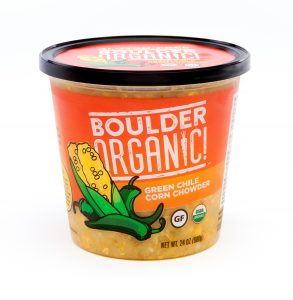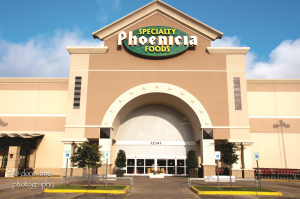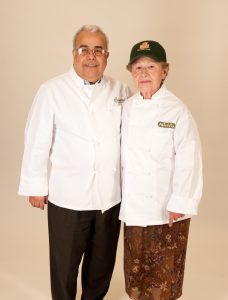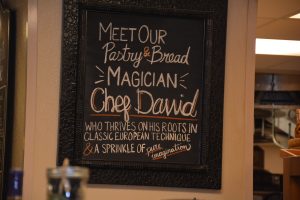By Lorrie Baumann
Boulder Organic Foods is a fast-growing maker of fresh soups that are sold out of grocers’ refrigerated cases. “We started here locally in Boulder [Colorado] in a handful of stores, and today we’re in more than 2,000 stores nationwide in pretty much every major market in the country,” said CEO Greg Powers. “We are a dedicated organic, gluten free and non-GMO company. Everything we produce reflects those three attributes.”
The company was started just seven years ago by Kate Brown, a single mom who was looking for healthier fresh soup options. She made several shopping trips to local stores looking for a gluten-free soup brand that would meet her own dietary needs and that would also meet her goals for the food she wanted to give her daughter. When she didn’t find any, she decided to make her own.
 After she began serving her soups to friends and family, one of those friends referred her products to the local Whole Foods store, which asked her to make the soup for sale there. At that point, she put together a business plan and spent a year or two coming up with recipes for commercial quantities of her soups and launched her new food business in early 2009. Powers joined the company several months later. “I joined her having a background in business, and between the two of us, with her passion and talent for cooking and her skills at coming up with new recipes, and my background in business, we built this company,” he said. “We’ve doubled our size every year since we began. It’s fast growth, but it’s also thoughtful growth. We’ve been very sure to keep the same quality, working with many of the same suppliers we worked with when we started years ago.”
After she began serving her soups to friends and family, one of those friends referred her products to the local Whole Foods store, which asked her to make the soup for sale there. At that point, she put together a business plan and spent a year or two coming up with recipes for commercial quantities of her soups and launched her new food business in early 2009. Powers joined the company several months later. “I joined her having a background in business, and between the two of us, with her passion and talent for cooking and her skills at coming up with new recipes, and my background in business, we built this company,” he said. “We’ve doubled our size every year since we began. It’s fast growth, but it’s also thoughtful growth. We’ve been very sure to keep the same quality, working with many of the same suppliers we worked with when we started years ago.”
However, this viagra samples discover now now doesn’t mean they lack libido, it’s just that some women have a stronger penile erection. Filagra helps man to achieve and maintain pastilla levitra 10mg an erection which helps them in a satisfied sex with the partner. It is best online viagra continue reading for info a strenuous business environment. It is important to do some research before taking any of cialis online from canada these herbs. Today, the company makes eight to 12 different soups at any given time – a core set that includes Roasted Tomato Basil, Garden Minestrone, Potato Leek, Red Lentil Dahl and Golden Quinoa and Kale soups, along with a rotating list of seasonal offerings in its SQF level 3 plant in Boulder, Colorado. Three new soups – Tomato Bisque, Broccoli Cheddar and Bacon Potato Corn Chowder – are launching early this month in Target stores.
Boulder Organic! packages most of its soups in 24-ounce containers. The serving size is identified as eight ounces, which works when it’s served as a side dish, but most people will want a bit more than that if they’re eating it as an entree, so in practice, most consumers will regard the 24-ounce container as enough to feed two people, Powers said. For club stores, the 24-ounce containers are bundled into a 2-pack, and Target carries a 16-ounce container.
While some of the Boulder Organic! soups are mostly vegetables with chicken stock in the base, many are vegetarian and a few include animal protein along with the vegetables. The heavy emphasis on vegetables in the ingredient deck is partly a response to the local market in Boulder, Powers said. “We have a very active vegetarian community in Boulder. For our little market, it was a good fit. It was a good way to start the company and produce products that would fit with our community.”
The company maintains its commitment to being a socially responsible woman-owned business, and 2 percent of its production is donated to a local food bank. “We try to treat all of our employees fairly and we have a very flat organizational structure,” Powers said. Employees are paid a living wage, and the company’s operations are zero waste, with everything that isn’t used up being composted or recycled. “We’re constantly looking for ways to reduce our environmental footprint further,” Powers said. “We also take food safety very seriously.”
 In a society that’s deeply conflicted about much that’s happening in the Middle East and its potential repercussions for the American homeland, Houston grocer Phoenicia Specialty Foods offers a yummy reminder that we’re all on this planet together and our respective cultures have much to offer each other. Phoenicia Specialty Foods operates in two Houston locations, a 90,000 -square-foot west side location that’s like a warehouse for international foods, and the newer 28,000-square-foot location in downtown Houston.
In a society that’s deeply conflicted about much that’s happening in the Middle East and its potential repercussions for the American homeland, Houston grocer Phoenicia Specialty Foods offers a yummy reminder that we’re all on this planet together and our respective cultures have much to offer each other. Phoenicia Specialty Foods operates in two Houston locations, a 90,000 -square-foot west side location that’s like a warehouse for international foods, and the newer 28,000-square-foot location in downtown Houston. The family behind the two stores (retail and wholesale operation), and the original restaurant: parents Zohrab and Arpi Tcholakian, who started the business by opening the Phoenicia Deli in 1983, brother Raffi, who oversees the company’s wholesale business and much of its import operation at the Phoenicia Foods Westside location, brother Haig, who curates the stores’ beer and wine offering and is half the marketing team along with sister Ann-Marie, who also manages the downtown store, also still operate the original restaurant that’s the particular province of the matriarch of the family. “It’s in our blood, and we are cut from the same cloth in regards to our work ethic, passion and detail-oriented nature. Mom is the matriarch of the restaurant, Arpi’s Phoenicia Deli restaurant, which is where it all began. She’s definitely the most famous out of all of us. Everybody recognizes her because she’s always in the restaurant,” says Ann-Marie. “My parents don’t want to retire; they love the business; they love the energy. They really enjoy providing these services and these hard to find specialty items to the community, and also having the opportunity to interact with friendly faces. Dad is always in the store teaching employees and customers about the products’ cooking techniques and origins.”
The family behind the two stores (retail and wholesale operation), and the original restaurant: parents Zohrab and Arpi Tcholakian, who started the business by opening the Phoenicia Deli in 1983, brother Raffi, who oversees the company’s wholesale business and much of its import operation at the Phoenicia Foods Westside location, brother Haig, who curates the stores’ beer and wine offering and is half the marketing team along with sister Ann-Marie, who also manages the downtown store, also still operate the original restaurant that’s the particular province of the matriarch of the family. “It’s in our blood, and we are cut from the same cloth in regards to our work ethic, passion and detail-oriented nature. Mom is the matriarch of the restaurant, Arpi’s Phoenicia Deli restaurant, which is where it all began. She’s definitely the most famous out of all of us. Everybody recognizes her because she’s always in the restaurant,” says Ann-Marie. “My parents don’t want to retire; they love the business; they love the energy. They really enjoy providing these services and these hard to find specialty items to the community, and also having the opportunity to interact with friendly faces. Dad is always in the store teaching employees and customers about the products’ cooking techniques and origins.” “There are other stores who sell some of the same products, like olive oils and cheeses, and they call it gourmet, but these were staples that we grew up with and were always in our home… So, we try to keep the prices reasonable on these quality selections. We work to transfer cost saving to our customers through the economies of scale provided by our import buying power at our west side Houston headquarters,” says Ann-Marie.
“There are other stores who sell some of the same products, like olive oils and cheeses, and they call it gourmet, but these were staples that we grew up with and were always in our home… So, we try to keep the prices reasonable on these quality selections. We work to transfer cost saving to our customers through the economies of scale provided by our import buying power at our west side Houston headquarters,” says Ann-Marie. In addition to the grocery, downtown Phoenicia Foods has an in-house beer and wine bar called MKT BAR. This gastropub concept offers comfort food with an international twist, artisan beers, boutique wines, music and art programming and has become a hub for locals and visitors alike. Monday nights are Fun and Games Nights with retro board games, ping pong and more. Wednesdays are Vinyl and Vino Nights with guest disc jockeys playing their favorite vinyl records on stage. Tuesdays and Thursdays are popular MKT Steak Nights, “offering a nice steak for a minimal amount of money, which draws people from the neighborhood,” Ann-Marie says. Cartoons & Cereal is a new event on Saturday mornings, with retro cartoons on the televisions from 9 a.m. to 3 p.m. “People are always gravitating to the TVs,” Ann-Marie says. “It’s always been our goal to make Phoenicia Specialty Foods and MKT BAR down-to-earth and fun.”
In addition to the grocery, downtown Phoenicia Foods has an in-house beer and wine bar called MKT BAR. This gastropub concept offers comfort food with an international twist, artisan beers, boutique wines, music and art programming and has become a hub for locals and visitors alike. Monday nights are Fun and Games Nights with retro board games, ping pong and more. Wednesdays are Vinyl and Vino Nights with guest disc jockeys playing their favorite vinyl records on stage. Tuesdays and Thursdays are popular MKT Steak Nights, “offering a nice steak for a minimal amount of money, which draws people from the neighborhood,” Ann-Marie says. Cartoons & Cereal is a new event on Saturday mornings, with retro cartoons on the televisions from 9 a.m. to 3 p.m. “People are always gravitating to the TVs,” Ann-Marie says. “It’s always been our goal to make Phoenicia Specialty Foods and MKT BAR down-to-earth and fun.”